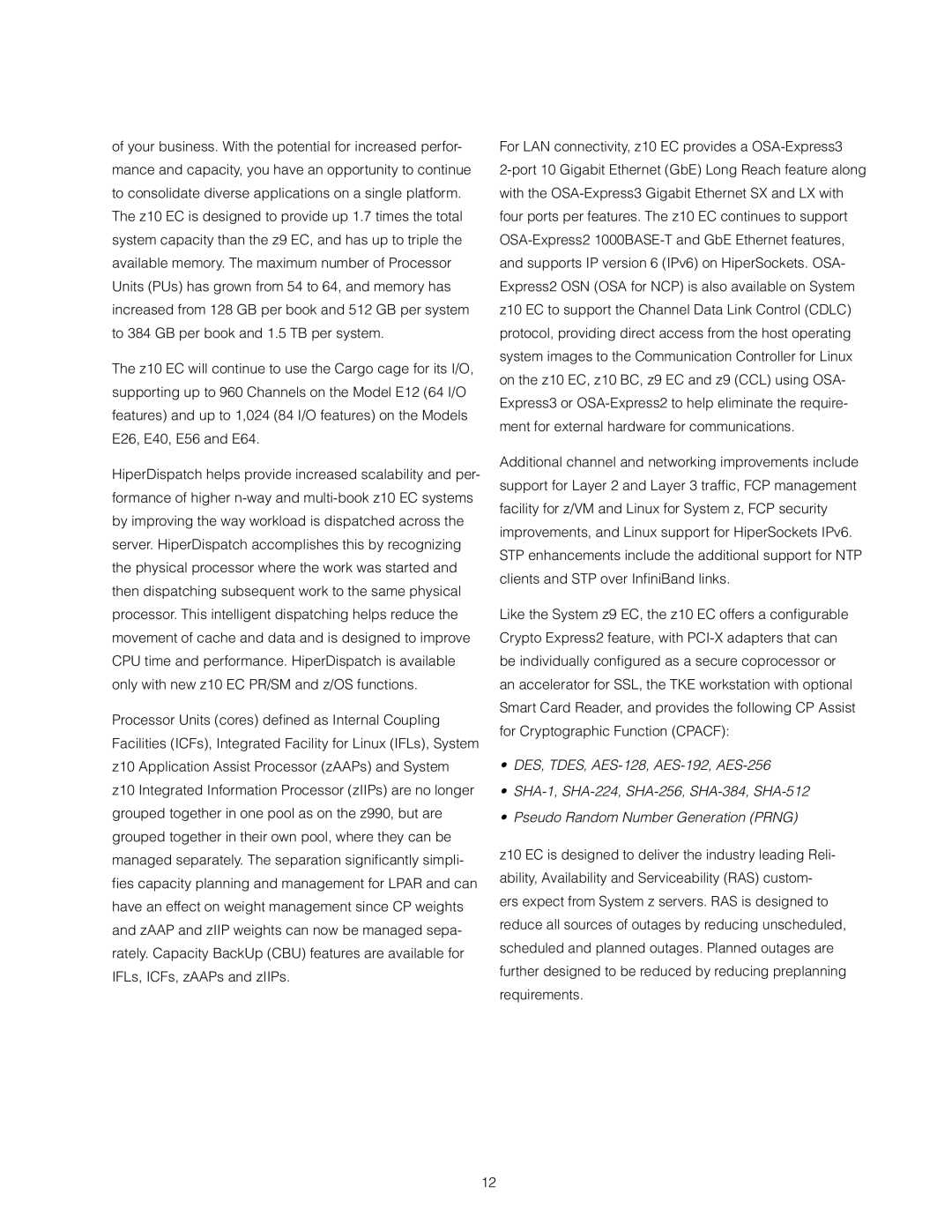of your business. With the potential for increased perfor- mance and capacity, you have an opportunity to continue to consolidate diverse applications on a single platform. The z10 EC is designed to provide up 1.7 times the total system capacity than the z9 EC, and has up to triple the available memory. The maximum number of Processor Units (PUs) has grown from 54 to 64, and memory has increased from 128 GB per book and 512 GB per system to 384 GB per book and 1.5 TB per system.
The z10 EC will continue to use the Cargo cage for its I/O, supporting up to 960 Channels on the Model E12 (64 I/O features) and up to 1,024 (84 I/O features) on the Models E26, E40, E56 and E64.
HiperDispatch helps provide increased scalability and per- formance of higher
Processor Units (cores) defi ned as Internal Coupling Facilities (ICFs), Integrated Facility for Linux (IFLs), System z10 Application Assist Processor (zAAPs) and System
z10 Integrated Information Processor (zIIPs) are no longer grouped together in one pool as on the z990, but are grouped together in their own pool, where they can be managed separately. The separation signifi cantly simpli-
fies capacity planning and management for LPAR and can have an effect on weight management since CP weights and zAAP and zIIP weights can now be managed sepa- rately. Capacity BackUp (CBU) features are available for IFLs, ICFs, zAAPs and zIIPs.
For LAN connectivity, z10 EC provides a
Additional channel and networking improvements include support for Layer 2 and Layer 3 traffi c, FCP management facility for z/VM and Linux for System z, FCP security improvements, and Linux support for HiperSockets IPv6. STP enhancements include the additional support for NTP clients and STP over Infi niBand links.
Like the System z9 EC, the z10 EC offers a confi gurable Crypto Express2 feature, with
•DES, TDES,
•
•Pseudo Random Number Generation (PRNG)
z10 EC is designed to deliver the industry leading Reli- ability, Availability and Serviceability (RAS) custom- ers expect from System z servers. RAS is designed to reduce all sources of outages by reducing unscheduled, scheduled and planned outages. Planned outages are further designed to be reduced by reducing preplanning requirements.
12
